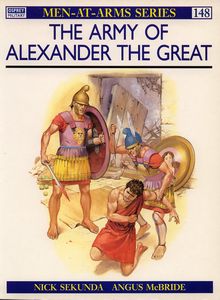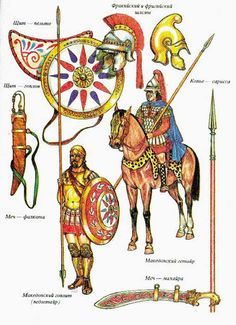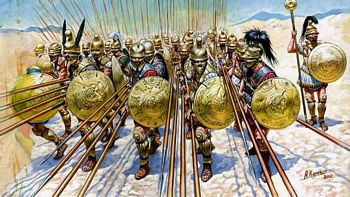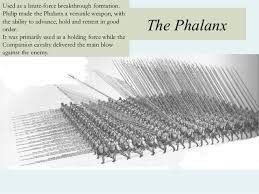army of Alexander the Great
| série: | Alexandre le Grand |
| éditeur: | Osprey |
| auteur: | Collectif |
| classement: | biblio501 |
| année: | 1984 |
| format: | broché |
| état: | TBE |
| valeur: | 10 € |
| critère: | ** |
| remarques: | English book introduction details for this book provided by following sources: - der Alexandersarkophag aus Sidon by F. Winter (1912) - une nécropole royale à Sidon by T. Reinach (1892), now in the Archaelogical Museum in Istanbul - Alexander mosaic from Pompeii, possibly by Apelles 1/ Philip's army - the creation of a powerful army was imperative and consisted of heavily-equipped cavalry and Macedonian phalanx 2/ Alexander's army a) the Court with the personal companions (hetairoi), the Companion cavalry, the king's Friends (philoi) and the Bodyguards (somatophylakes) b) the Royal Pages (basilikoi paides), consisting of young noble men c) the Royal Bodyguards (somatophylax basilikos) consisting of young adult noblemen d) the Royal Army - Alexander was head of the army and at the same time: archon of Thessaly and head of Corinth's League - the army was commanded by the generals (strategoi), then came the rest of the officers (hegemones) - the administration consisted of the Royal secretary (grammateus basilikos) with the Inspectors (episkopoi) 3/ the Cavalry - consisting of the building-block = ile (squadron) of 200 men, commanded by the itarch and divided into four tetrarchiai, each under the command of the tetrarch, a number of squadrons could be formed into a cavalry brigade or hipparchy, commanded by a hipparch, the tactical formation usually adopted was the "wedge" a) the Companion cavalry (hetairoi) - Royal squadron = personal companions b) the Thessalian cavalry - could have been the best cavalry unit in the whole army, the Thessalian regiment was the counterpart to the Royal squadron c) the allied horsemen - this was a contribution of the Corinthian League d) the Scouts (prodromoi) - consisting mainly of Thracian auxiliary cavalry with the primary role to scout ahead of the advancing army e) the Thracian cavalry - consisting of light cavalry f) the Mercenary cavalry - was a light auxiliary cavalry 4/ the Infantry - consisted mainly of the phalanx with the "dekas" forming one file of the phalanx - deep order = march order (32 deep) - close order = attack order (16 deep) - locked shields = defense order (8 deep) - each file was commanded by a dekadarch, an infantry company (lochos) would consist of 512 men drawn up in 32 files of 16 deep and commanded by a lochagos or lately called a pentekosiarch - a number of companies would comprise a battalion or taxi or chiliarchy >> p. 25 details about the army's equipment the weapons - sometimes a large shield - cuirasses, some made up of bronze, some of leather - helmet, mostly of the "Phrygian" type - different kinds of swords - long spear called the "sarissa" (up to 18 feet = about 5.- m) a) the Foot Companions (pezhetairoi) - the asthetairoi were soldiers of the elite battalions b) the Shield-Bearers (hypaspistes) - originally formed from the king's companions, they mostly acted as a flexible link (= flying column) between the Companion cavalry and the Foot Companions, therefore probably more lightly equipped than the Foot Companions c) the Greek infantry - consisting of some 7000 allied infantry commanded by a Macedonian "stratogos", consisting also of mercenary infantry whose role was to provide garrison troops d) the light infantry (psiloi) consisting of - the archers (toxotai), mostly of Cretan origin - the Agrianian javelinmen (akontistai) - the Slingers >> a good small book giving a detailed description of Alexander's army with special emphasis on the army's organisation, administration and equipment, espc. on the equipment (clothing, uniforms, national dress, armour and garments) presented with interesting illustrations - it is however regrettable that not much mention is made to the artillery, siege-machines and military tactical formations but it is a good prelude for reading the various books depicting Alexander's campaigns and war operations |
| couvertures: |     |
Copyright 2008 - 2025 G. Rudolf
